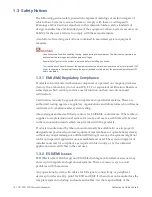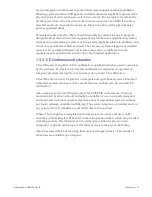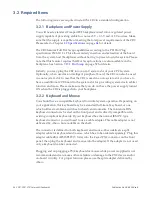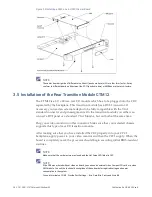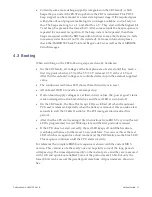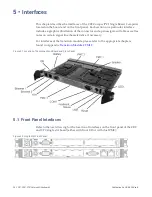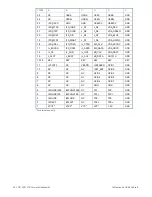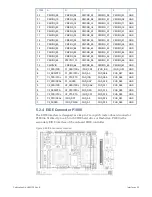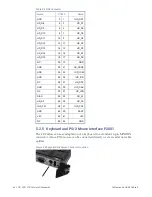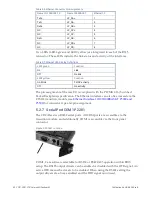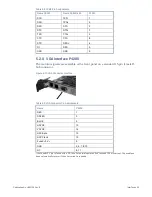
Publication No. HRMCP9 Rev. B
Getting Started 31
•
Currently some more debug support is integrated on the CR9 family, which
beeps the postcode if the POST stops before the CRT is initialized. This POST
beep support can be removed at a later development stage, if the required space
within the onboard programmable logic is no longer available, so don’t rely on
this. The beeps are long for a ‘1’ and short for a ‘0’. They start with the highest bit
7 and beep 8 represents the lowest bit 0. After some seconds the beep sequence is
repeated for an easier recognition. If the beep code is not repeated, then these
beeps are issued within the BIOS execution to show some other failures (i.e. fails
in memory detection or if no VGA is detected). For more information please
check the AMIBIOS8 Check Point and Beep Code List as well as the AMIBIOS8
Error Messages.
4.3 Booting
When switching-on the CR9 following steps are done by hardware:
•
On the CR9 family, all voltages at the backplane are observed until they reach a
first trip point which is 2.5 V at the 5 V/3.3 V rails and 9.5 V at the +12 V rail.
After this the onboard voltages are controlled raised up to the external supplied
value
•
The continuous red Status LED shows that all circuitry is in reset
•
All onboard DC/DC converters are ramped up
•
If all onboard supply voltages are at their correct values, the ‘power good’ status
is acknowledged to all onboard devices and the red LED is switched off
•
On the CR9 family, the blue Hot Swap LED is switched off when the onboard
PCI reset is released. Especially when the battery is removed, this can take a few
seconds to start the 32 kHz Oscillator. The PCI reset gets inactive after this
period.
•
After this the CPU start reading it first instructions from BIOS. Very soon the red
LED is programmed to a red blinking state and the first postcode is issued
•
If the CPU does not start correctly, the red LED keeps off until the hardware
watchdog will issue a further reset 1.6 seconds later. You can see this at the red
LED, which is on again for a short moment (at the CR9 family also the blue LED).
This sequence continues until the CPU starts correctly.
For reference the complete BIOS boot sequence is shown with the current BIOS
version. This version is a rather early one and hopefully some of the long periods
will speed up. The times depend mainly on the memory size and they are measured
with 1 GB and quick boot enabled. Some of the postcodes are 16 bit, but only the
lower 8 bits can be seen at the parallel port data lines. All postcodes are shown in
hex.


